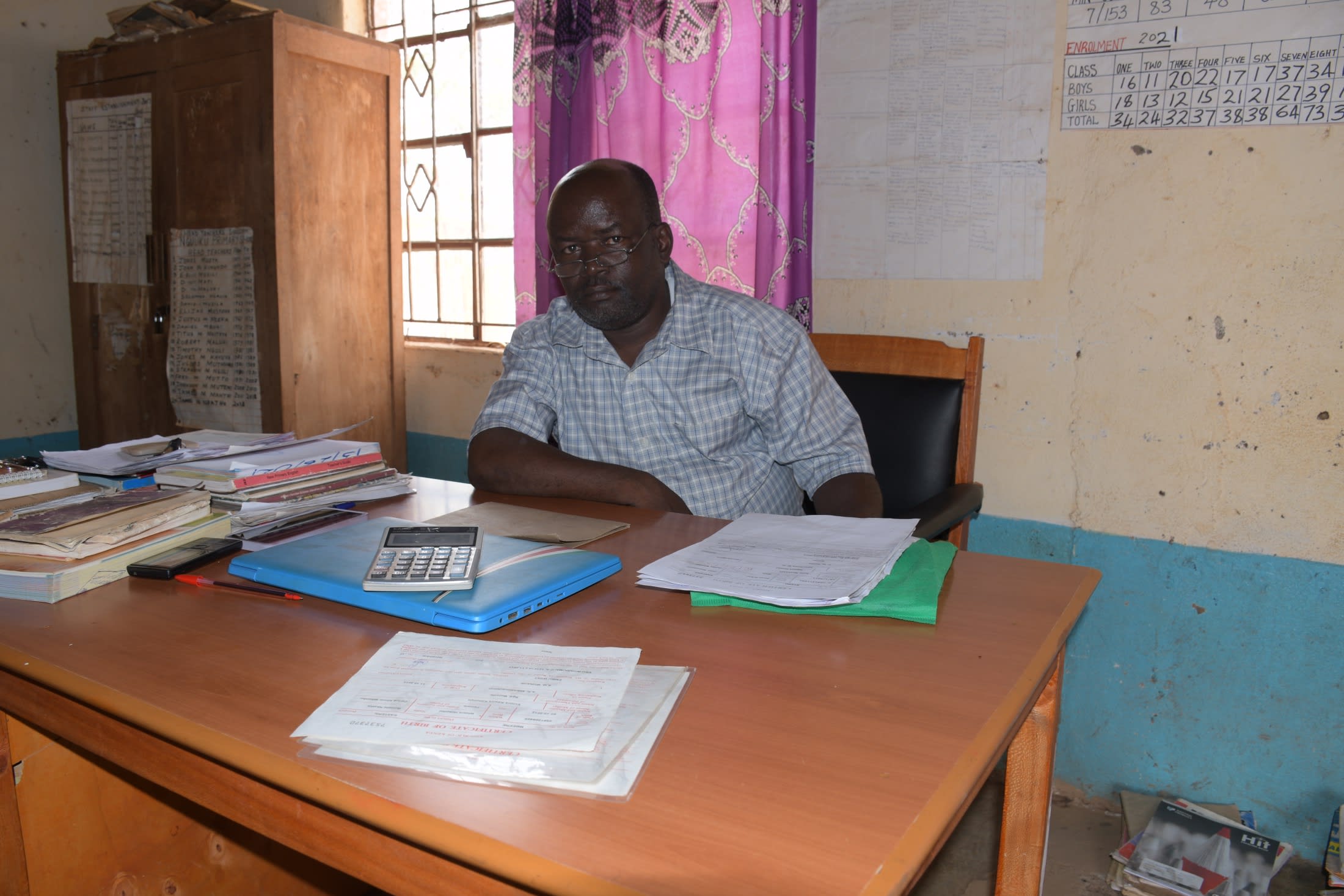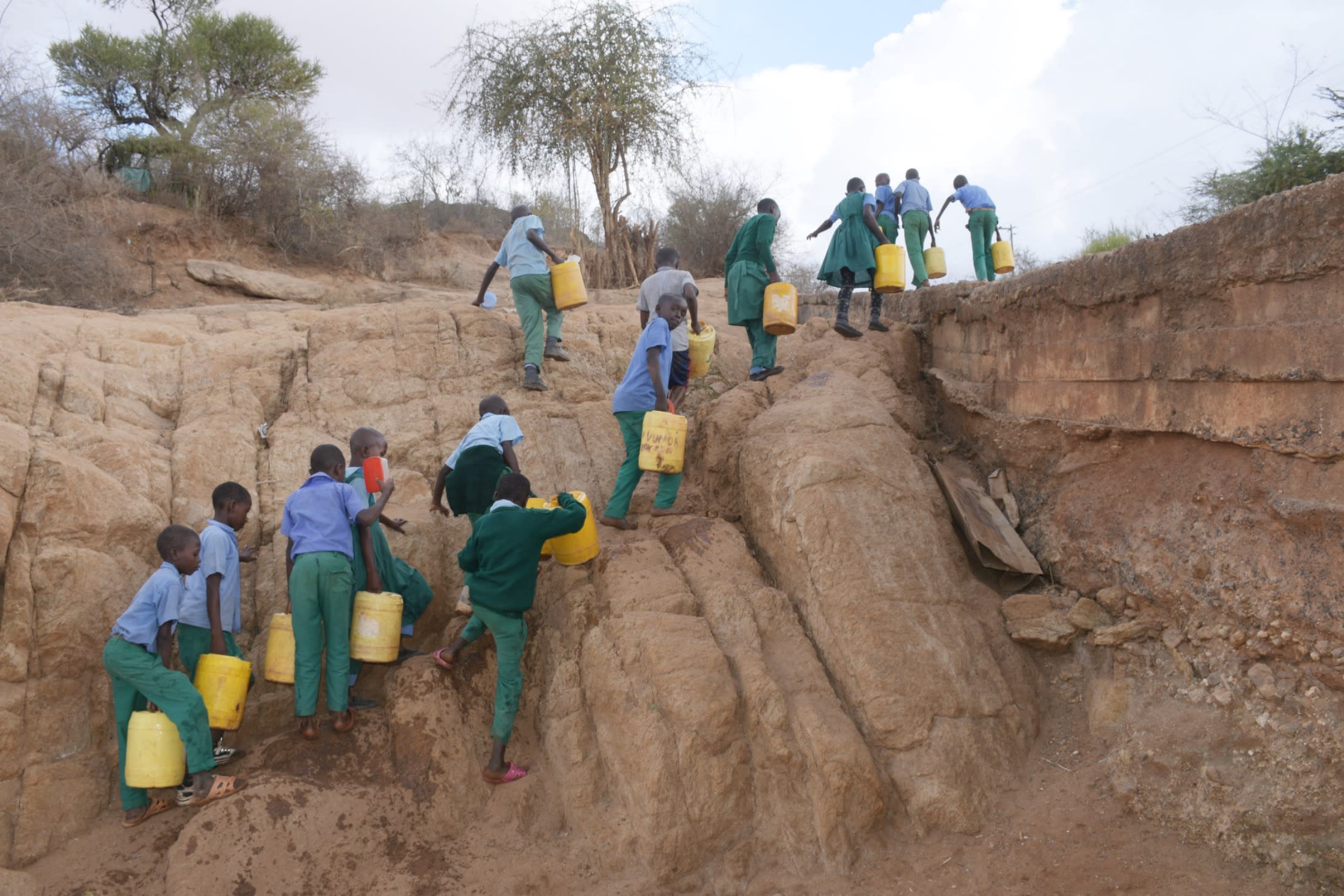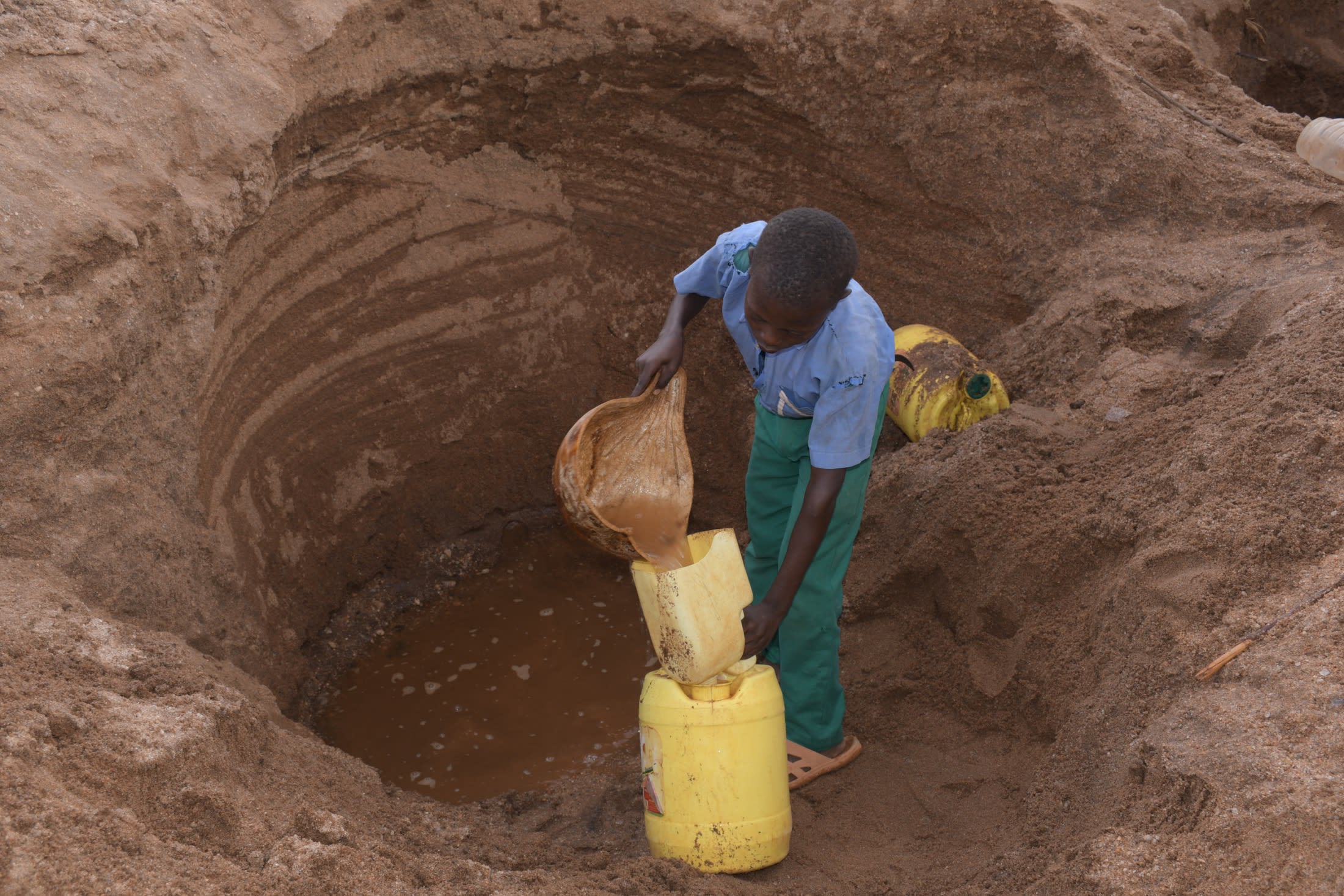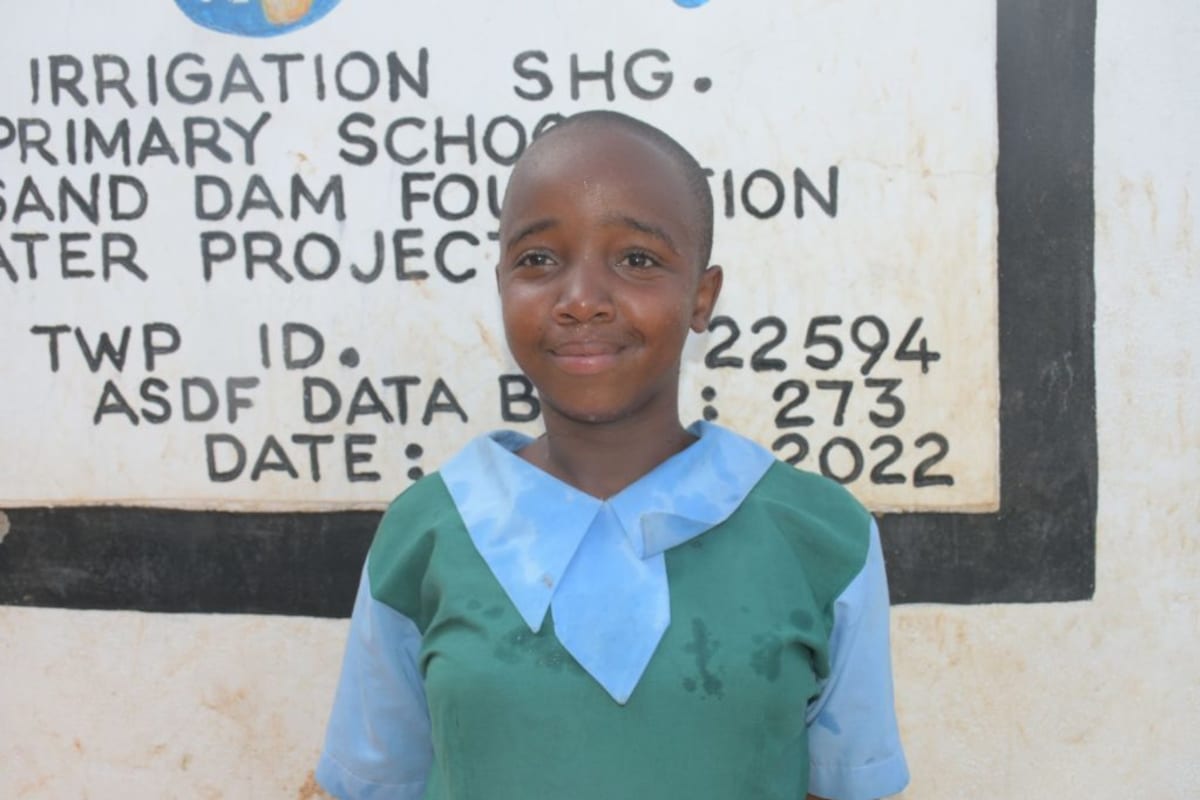Nguuku Primary School is a boarding school for 384 male and female students who struggle to find enough water for themselves and their teachers daily.
"Carrying water to school is difficult considering we sometimes have to [also] carry firewood to school. I arrive in school late and exhausted, which affects my concentration in class," shared 11-year-old Kevin K., shown below carrying water.

"Getting enough clean water to drink is a difficult ordeal because water from scoop holes is unsafe for human consumption, thanks to the animal [excrement] and dust," said 45-year-old headteacher James Ndatho (shown below).

The school's several small rain tanks collect water, but the high demand makes it impossible for them to hold sufficient water for all the school's needs. The students' only choice is to venture out into the community to find water from scoop holes, but they are a kilometer away, and it is physically exhausting to climb up the steep surrounding hills with heavy jerrycans full of water.

With so many students and community members relying on the same scoop holes, time is wasted waiting in lines, and the amount of water collected is limited. Various issues at the school happen as a result. Meals are delayed, students miss class, and the hygiene of the students and the school is lacking.
The water they manage to collect is also not safe to consume, leaving everyone struggling with cases of typhoid, amoeba, and dysentery.

"I have to send home more than a dozen pupils each term due to water-related infections, which negatively affects their academic performance," said Mr. Ndatho.
The school needs a much larger rain tank to provide sufficient water for everyone so students can regain their time and health, and teachers can get back to helping them learn.
Rain Tank
We will build a 104,000-liter rain tank for this school, making the others look tiny in comparison. Because of how rarely it rains in Southeastern Kenya, this tank's large volume is designed to store as much water as possible during the seasonal rains, making more water available through the dry months. This water will benefit the students, teachers, and supplementary staff.
Parents will mobilize the materials needed for construction, including sand, stones, and water. They will also lend their strength and time to help with the construction. We will complement their materials with a skilled artisan to lead the project in addition to providing the tools, lumber, metal, cement, and gutter system.
As soon as the tank has time to cure, it can begin collecting rainwater for the school's use.
Training
We will train students and staff on sanitation, hygiene, and other topics for 1 day. Those in attendance will form a school health club that will promote good hygiene and sanitation practices both at school and at home. They will learn all of the steps to proper handwashing, how to treat water, and how to keep their environment clean. The school will also be taught how to best oversee and maintain their new rain tank and handwashing stations.
Handwashing Stations
A total of 3 handwashing stations will be installed upon the project's completion and before training. These are 1,000-liter plastic tanks fitted with 3 taps each, allowing 9 students to wash their hands at once. The student health club and school management will be responsible for making sure the tanks are filled with water and that a cleaning agent such as soap or ash is always available.

 Rainwater Catchment
Rainwater Catchment
 Rehabilitation Project
Rehabilitation Project































